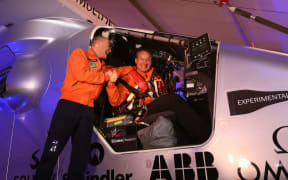Swiss pilot Andre Borschberg has begun his bid to cross the Pacific, from China to Hawaii, in the zero-fuel aeroplane Solar Impulse 2.
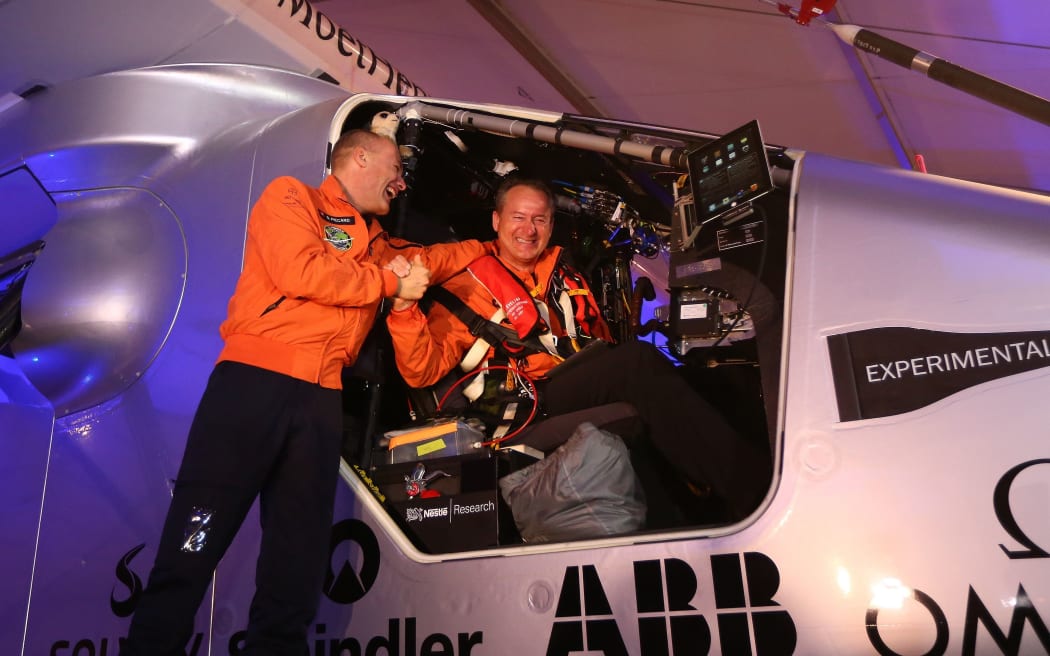
Bertrand Piccard (left) and Andre Borschberg have been sharing duties during Solar Impulse 2's journey around the world. Photo: AFP
The experimental aircraft, which has a wingspan bigger than a jumbo but weighs little more than a large car, left Nanjing at about 2.40am (6.40am NZST).
It is likely to take Mr Borschberg five to six days of continuous flight to reach his central Pacific destination.
He will try to stay awake for much of that time, taking only short catnaps.
His progress will be monitored the entire way from a control room in Monaco.
Meteorologists and flight strategists will constantly update him on the best route to follow.
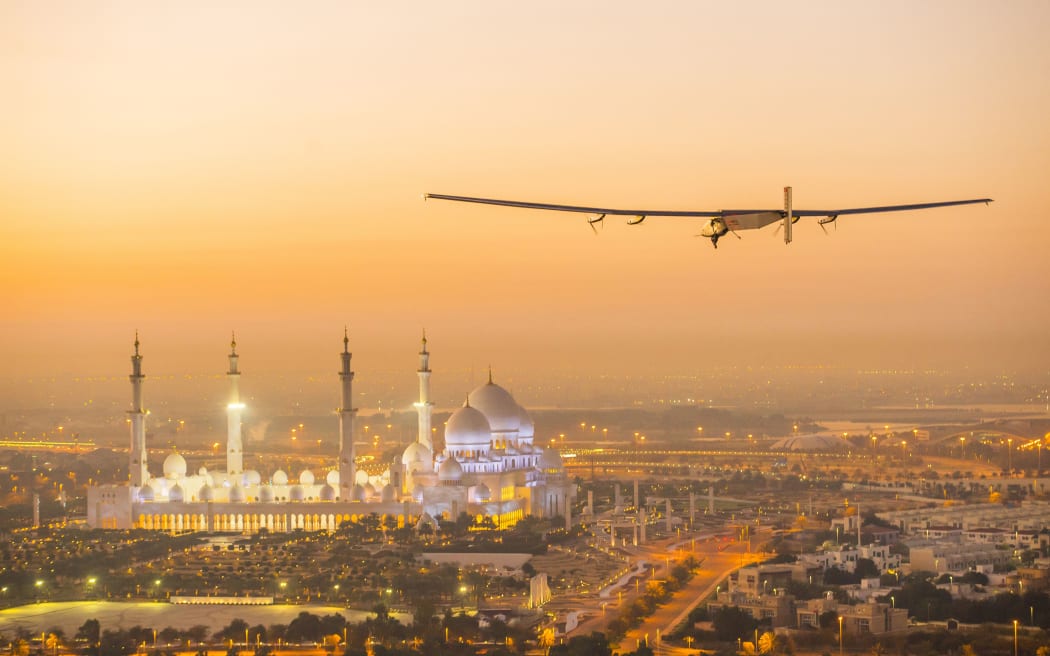
The experimental plane's around-the-world mission began in Abu Dhabi on 9 March. Photo: AFP / Solar Impulse
The journey is the seventh leg in the single-seat, propeller-driven aircraft's quest to circumnavigate the globe using just the energy of the sun.
The project made steady progress after starting out from Abu Dhabi in March, but was held up for more than a month on China's east coast waiting for the right weather conditions over the ocean.
Solar Impulse needs not only favourable winds to help push it forward, but also clear skies to enable its 17,000 wing-mounted photovoltaic cells to achieve peak performance.
These cells must have the vehicle's lithium-ion batteries fully topped up at dusk to sustain flying through to dawn the next day.
Tough ask
Mr Borschberg is a highly experienced pilot, and as a trained engineer is completely familiar with the plane's systems - but is in no doubt how tough the mission will be.
"It's more in the end about myself; it's going to be an inner voyage," he told the BBC before departure.
"It's going to be a discovery about how I feel and how I sustain myself during these five or six days in the air."
The distance to Kalaeloa airport on Hawaii's O'ahu island is more than 8000km.
If, early on in the flight, the weather turns bad or he encounters a serious technical problem, Mr Borschberg can always choose to turn around and head back to China or Japan.
But there will come a point where that option is denied to him, and Mr Borschberg and his support team have had to prepare for the possibility of ditching in the Pacific if something goes seriously wrong.
The pilot himself would not go down with the plane because of the risk of electrocution once in the water. Instead, he would bail out and wait for a ship to come and pick him up.
If he succeeds in reaching Kalaeloa Airport, he will set several aviation records - not least the longest-duration journey for a single-seater plane.
- BBC
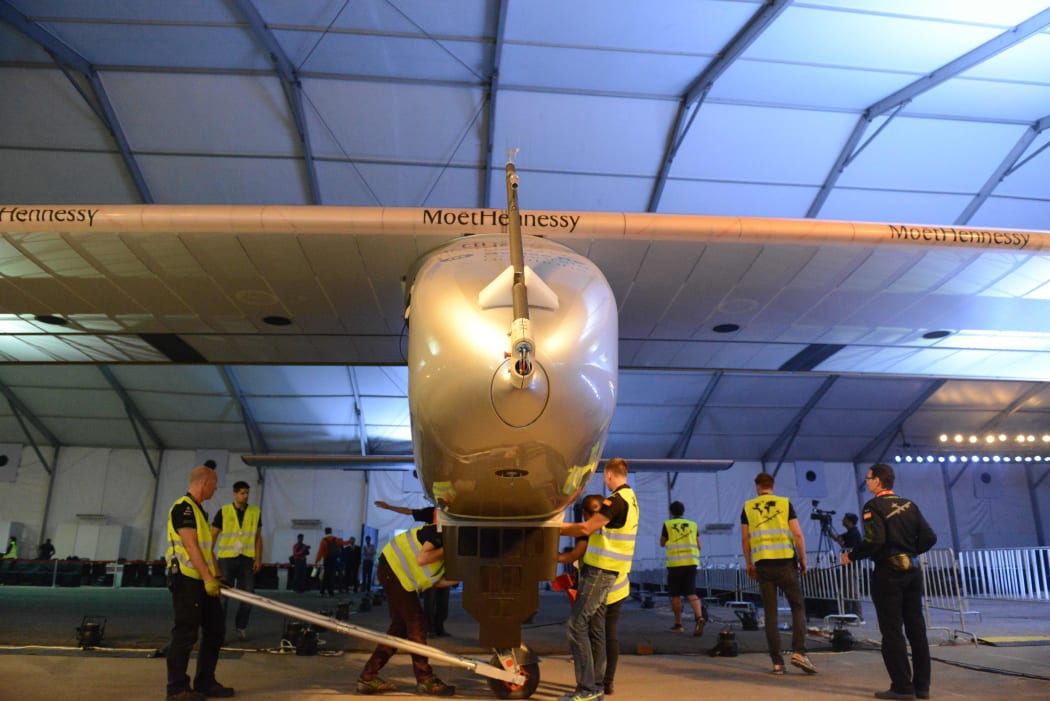
Ground crew members inspect Solar Impulse 2 at Sardar Vallabhbhai Patel International Airport in Ahmedabad, India. Photo: AFP
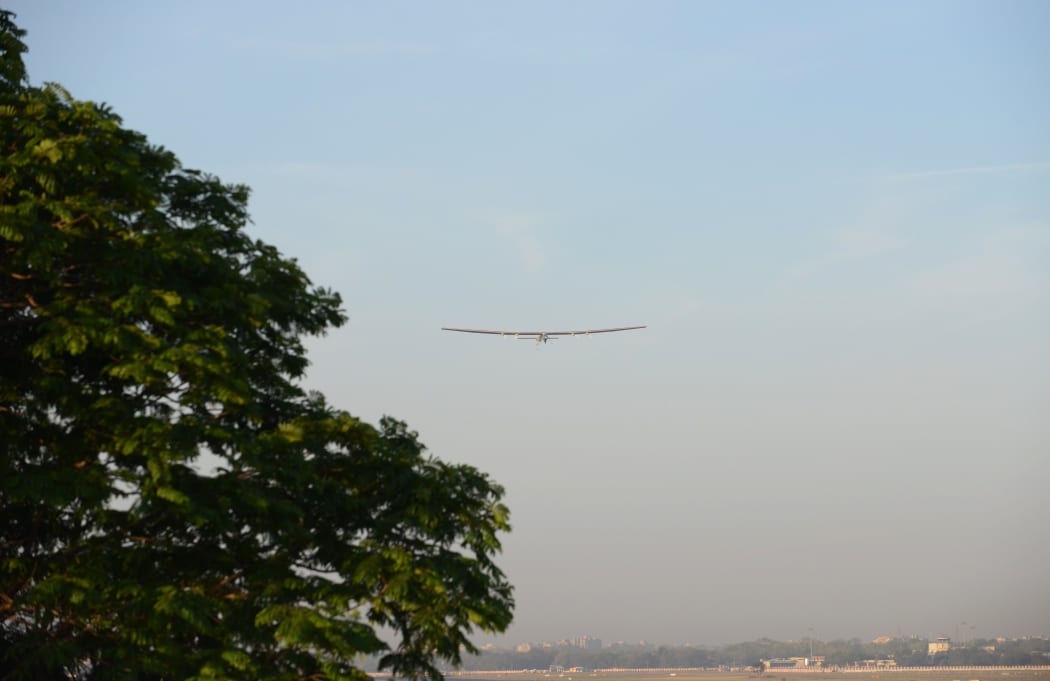
Solar Impulse 2 takes off from Sardar Vallabhbhai Patel International Airport on 18 March. Photo: AFP
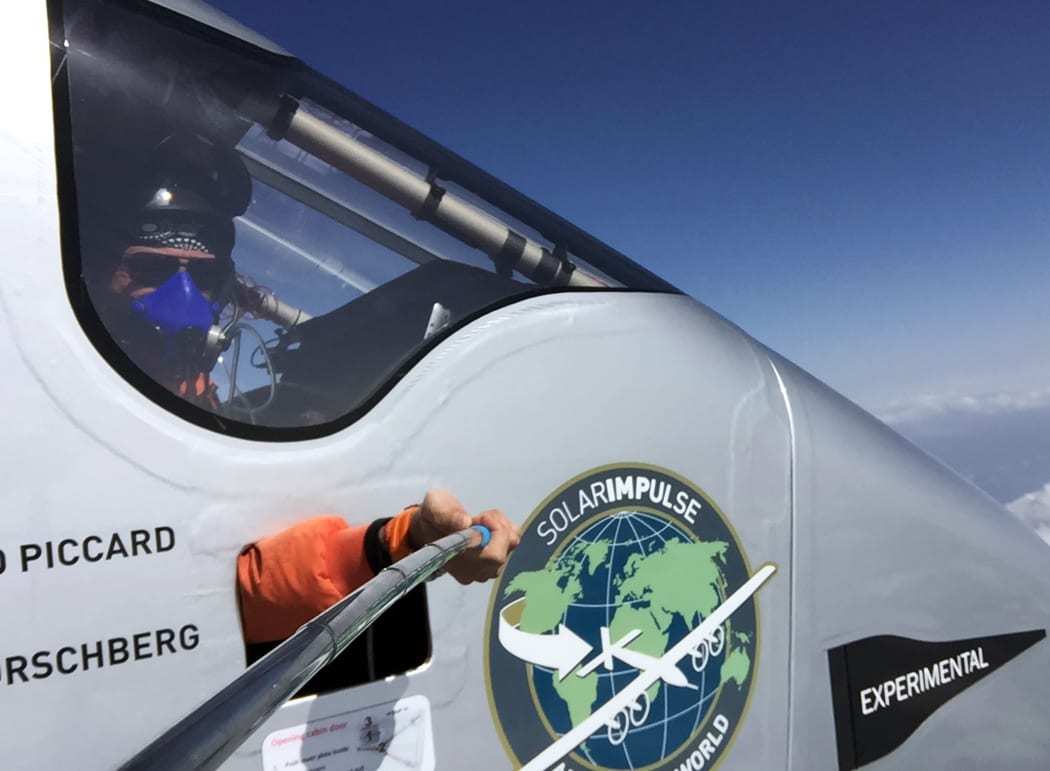
Bertrand Piccard takes a photo using a selfie stick during the flight from Chongqing to Nanjing. Photo: AFP
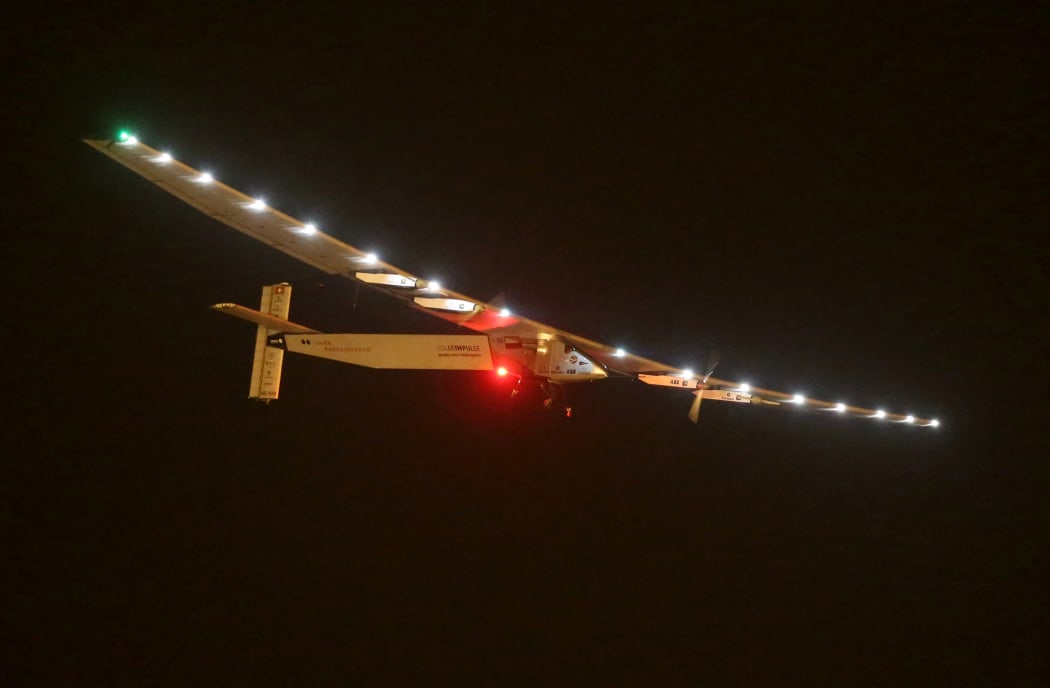
Solar Impulse 2 just before landing at the Nanjing Lukou International Airport in China. Photo: AFP
